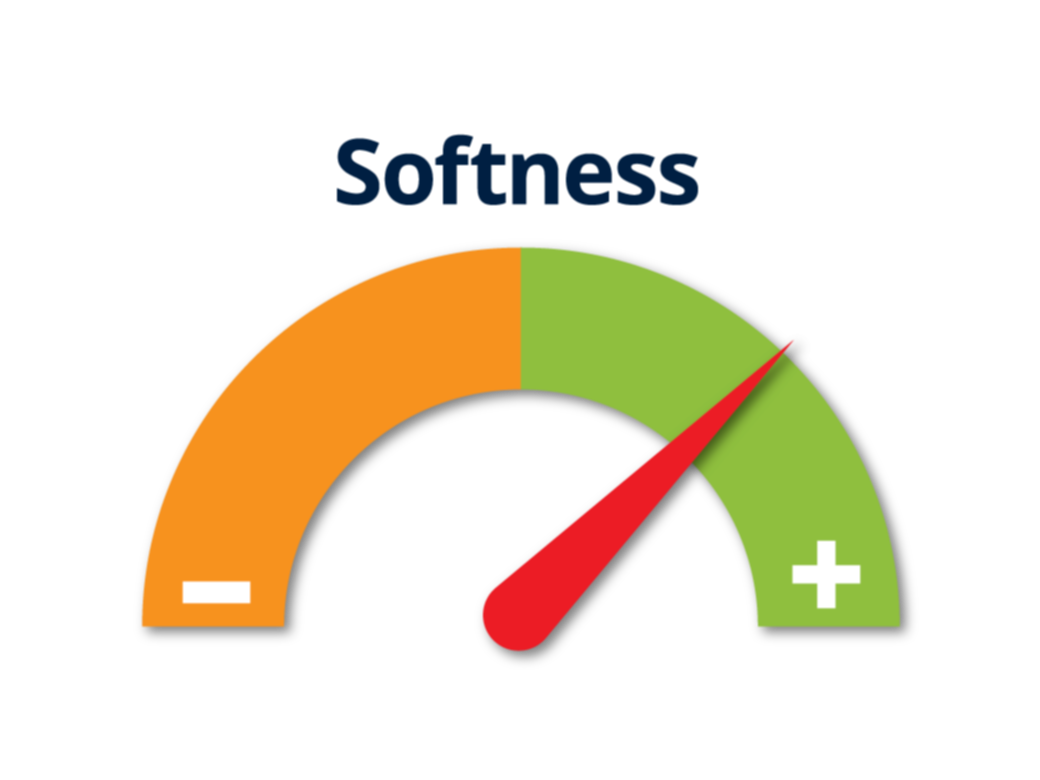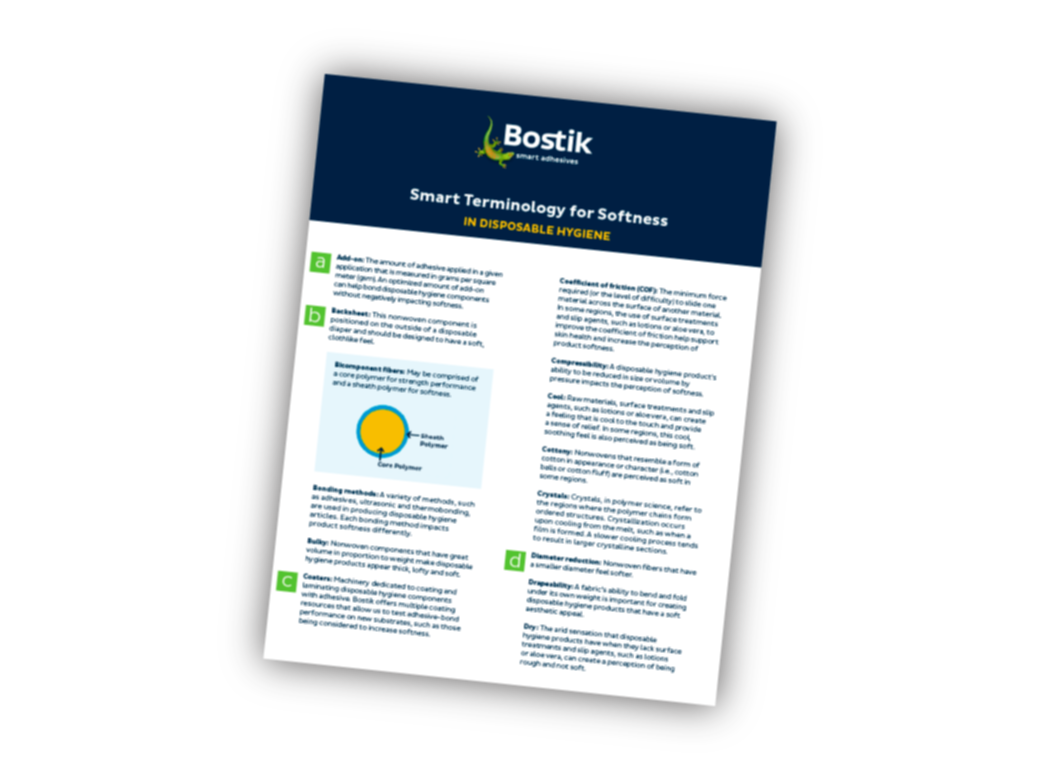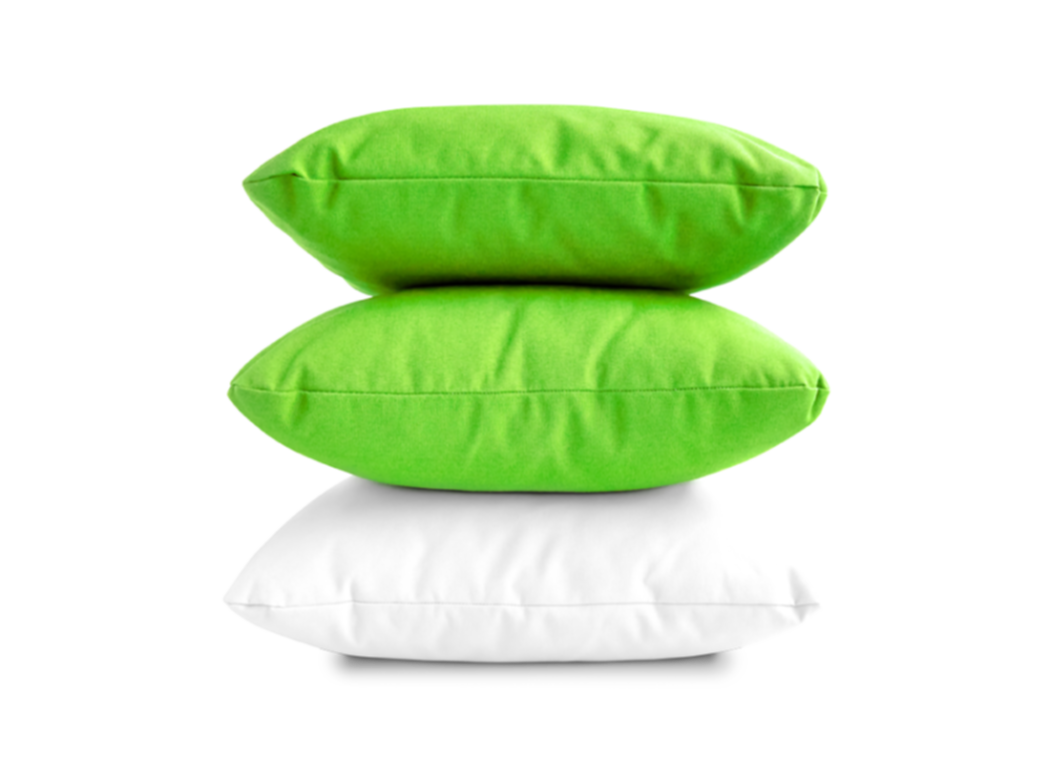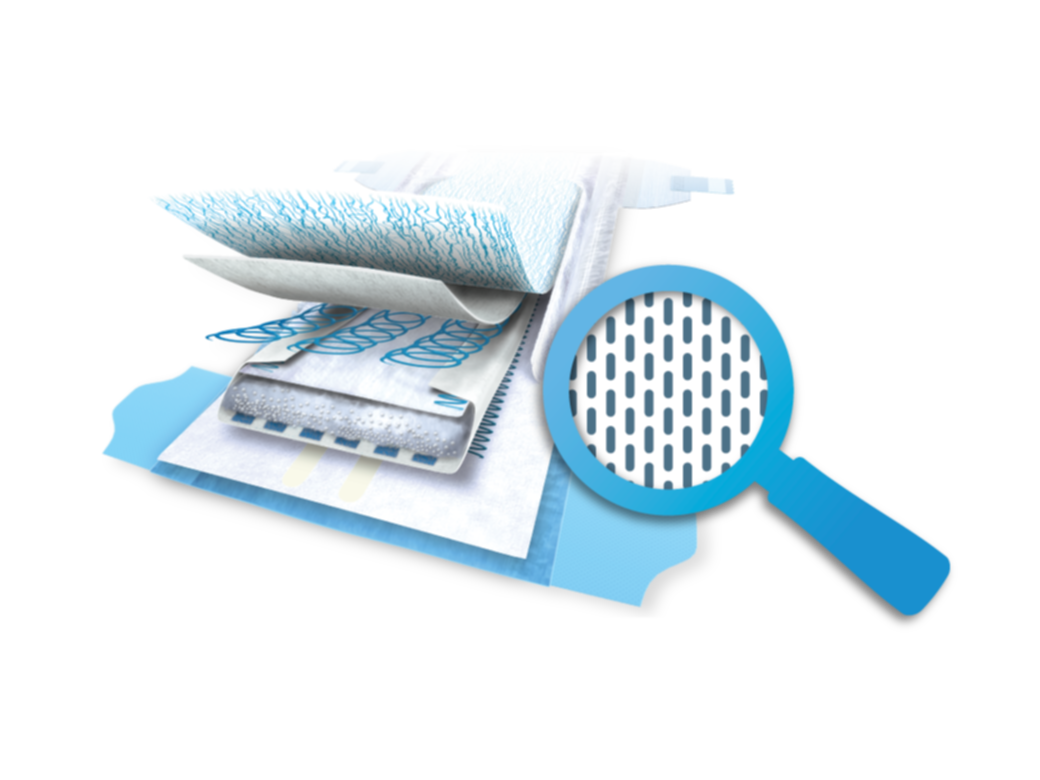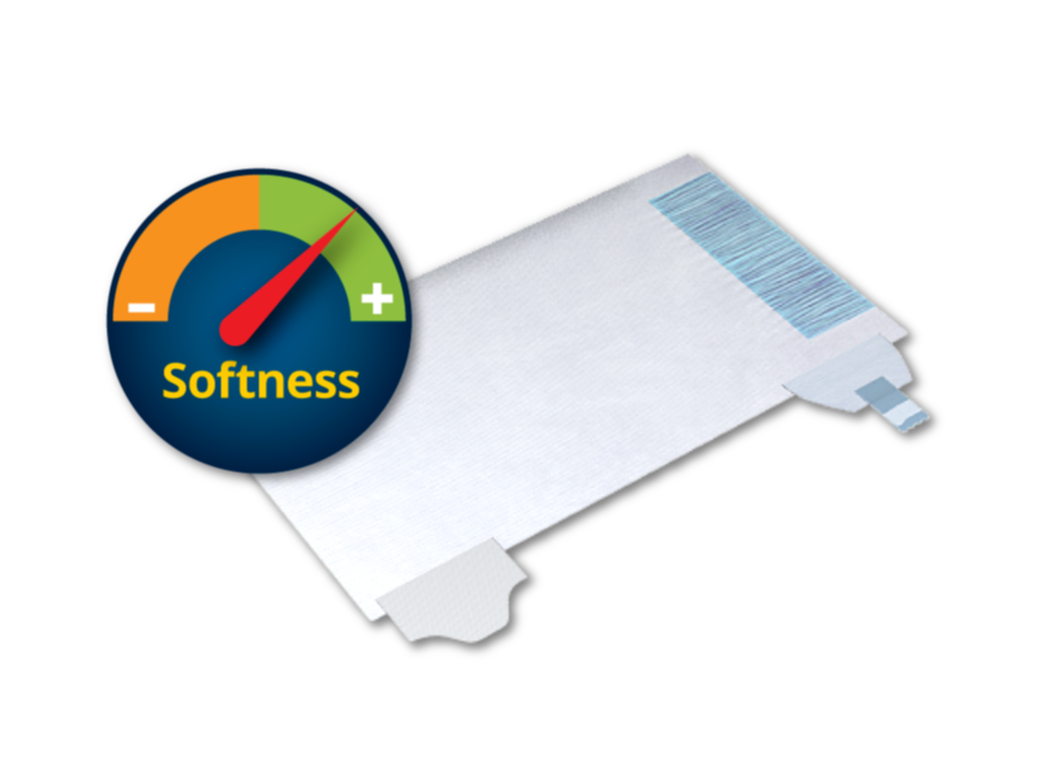Backsheet Films: Contributing to Overall Softness
Leak protection and skin wellness have long been top priorities for disposable hygiene manufacturers. Now, softness is also becoming a main focus. Through advancements in materials and manufacturing, nonwoven fabrics can help achieve greater softness and cushioning in many key areas of the diaper, especially in clothlike backsheets.
A clothlike backsheet is made of a laminate of film and nonwoven fabric. In addition to the feel of the outfacing nonwoven fabric, the film composition, manufacturing process and lamination process used also can impact and improve softness.
There are two types of films typically used for the backsheet:
- Blown films, which are common in diapers produced in Europe
- Cast films, which are widely used in diapers produced in the United States
Understanding blown film and cast film
Blown film production involves blowing a polymer film into a giant bubble. This step requires high melt strength, high viscosity in the melt, and therefore low melt flow index polyethylene with a high molecular weight. Cooling is slow, resulting in large crystals. While the finished film feels hard, rigid and is noisy, it offers good tear resistance, puncture resistance and heat resistance. It also offers a good amount of strength in both directions.
Cast film requires medium to low viscosity melt and involves fast cooling on a chill roll. This provides a film structure with smaller crystals. It also has a higher transparency, and it is softer and quieter. It is important to also note that cast film is less tear resistant and puncture resistant. In general, it has lower strength and, more importantly, very low cross direction strength.
In both processes, the films are generally micro or macro embossed to help:
- Increase softness
- Reduce noise
- Increase apparent thickness
- Increase the surface area
- Increase elasticity
- Modify the coefficient of friction
- Improve adhesion
Blown film embossing can happen right on the line or afterwards on a separate unit. Embossing on cast film is done on the chill roll.
Breathability and softness of backsheet films
Breathability is a key factor in increasing comfort for the diaper wearer. It also increases softness of the film.
A breathable film is produced by extruding a film of polyethylene that has a mineral filler (such as calcium carbonate – CaCO3 – typically at 50% content) and then stretching this film. The stretching process tears the polymer chains away from the surface of the CaCO3 particles to produce micro pores in the film cross-section. With the stretching effect and remaining CaCO3 on the surface, the film has a softer touch.
Bonding Methods
There are multiple bonding methods that can be used to produce a clothlike backsheet, including:
- Extrusion coating: Melted polyethylene is directly applied on the nonwoven fabric and pressed between two rolls. This causes the polyethylene to sink deeply into the nonwoven fibres. The result is a cost-efficient laminate with good strength, but it is relatively stiff. It also typically has lower tear resistance, a rustling sound and is pinhole sensitive.
- Thermobonding: The film and the nonwoven fabric are preheated just below their melting point, combined and pressed between nip rolls. There is some polyethylene penetration into the nonwoven fibres. This bonding method gives good strength and is cost-efficient. It is also relatively stiff and noisy, but to a lesser extent than the extrusion coated material.
- Lamination: The first substrate is coated with molten hot melt adhesive just before being combined with the second substrate between nip rolls. In this case, the laminate is taking the best properties of both substrates, instead of being “fused” into one single material as was noted in the two above processes. As a result, softness and noise are better, and strength and mechanical resistance are good. Zone bonding is also possible. On the down side, bleed through can happen when the process is not controlled.
How adhesives help with softness
It’s been said adhesives are important to product performance, but not all adhesives are created equal. Manufacturers looking for greater softness need to use an adhesive that will successfully bond current and future soft materials without taking away from softness (feel and drape) or affecting the appearance of the materials used.
In fact, the right adhesives can offer additional softness benefits above and beyond other bonding techniques. This makes partnering with a smart adhesive expert critical in making your softness goals a reality.
Softness Materials from Bostik Academy
Click the links below to sign-in and access all of our Academy materials.
